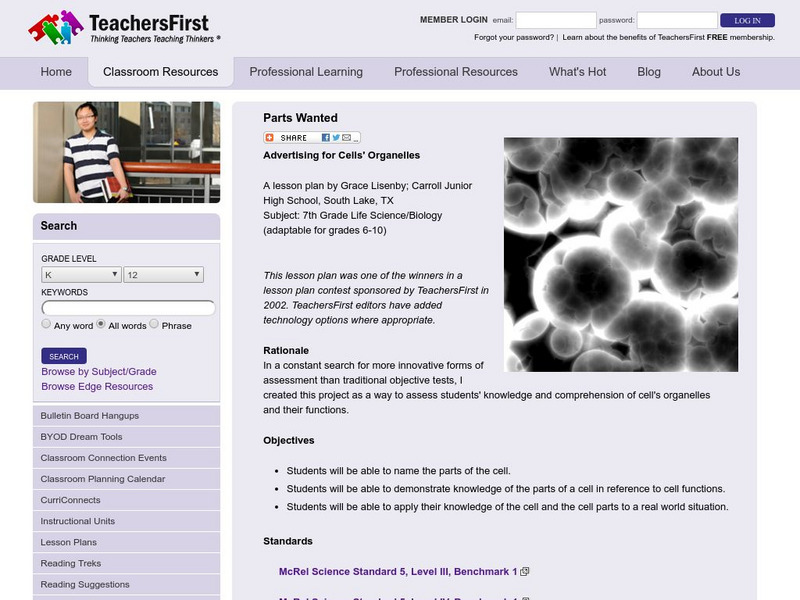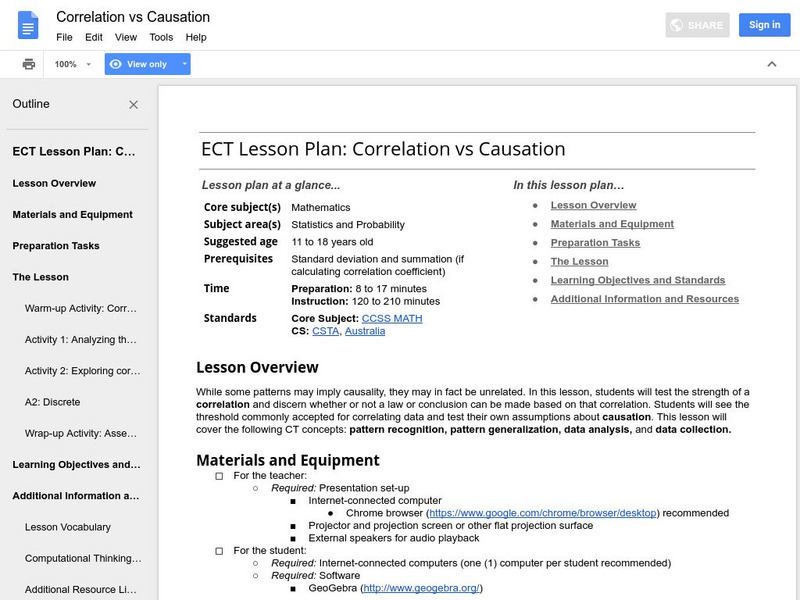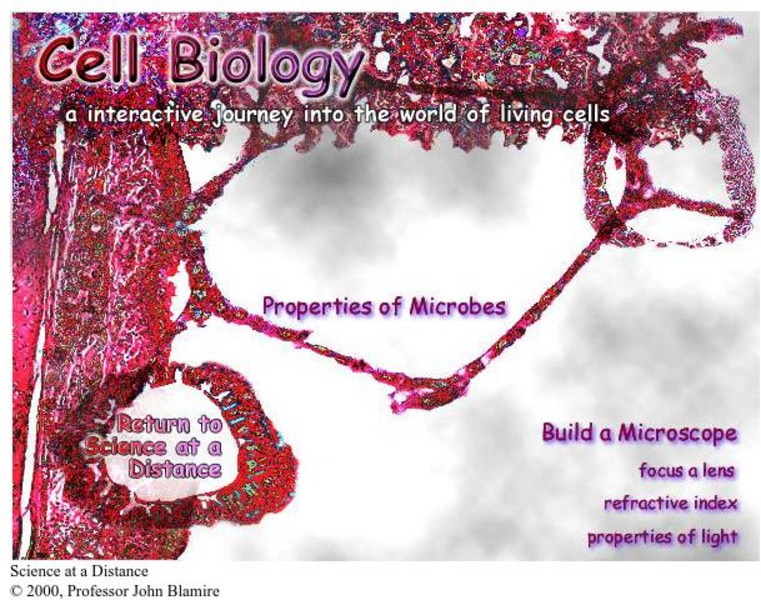Hi, what do you want to do?
Curated OER
Creatures of the Ocean
Second graders examine the characteristics of a specific ocean creature. In pairs, 2nd graders create a graphic organizer to list categories and supporting details of the ocean creature. Students review data and use it to write a report...
Curated OER
Thoreau and those he influenced
Eleventh graders work in groups and research assigned person using the internet and use print resources for DHS media center. They create a poster that shows possible connections to H.D. Thoreau's writings and philosophies, a short...
Curated OER
the Impact of the U.s. Supreme Court on High School Journalism.
Students study of the First Amendment, Tinker, Hazelwood and the Colorado Student Free Expression Law. They discuss the ramifications on the student press and recite their memorized First Amendment rights. They discover what can...
Curated OER
Teaching Biotechnology by Analogies and Models
Students examine analogies and create models to help visualize the concept and technique of basic biotechnology. Common scenarios are used to explain the complex procedures of genetic engineering.
Curated OER
Pharmacology
In this pharmacology activity, students compare excitatory and inhibitory neurotransmitters and how these work on the body. This activity has 3 drawings and 13 fill in the blank questions.
Curated OER
DNA Extraction From a Variety of Tissue Samples
Learners, working in cooperative groups, extract very impure samples of DNA from a number of tissue samples. They determine how the samples can be preserved and how they are similar.
Curated OER
Science: Designer genes
Students engineer new organisms using biotechnology. In small groups, they write procedures, list benefits and drawbacks, and explain how their new organism might affect the environment. After creating their new organisms, they present...
Curated OER
CALORIE COUNTDOWN
Students will categorize foods according to their components and energy content.1. Design a large bulletin board with sections for carbohydrates, fats and proteins.
2. Ask students to bring labels and packages of different food products....
Curated OER
The History of Life
In this history of life worksheet, students review 4 vocabulary words associated with the beginnings of life. Students place these terms into a crossword puzzle and then complete 2 fill in the blank questions.
Curated OER
Wandering Wild-oats
Students observe wild-oat seeds. In this biology lesson, students watch how wild-oat seeds react to moisture and draw conclusions and make predictions.
Department of Defense
Do Dea: Biology: Unit 3: Cell Structure
In this third unit of a Biology course, students learn about cells and cell structure. They compare prokaryotic and eukaryotic cells and learn about the specialized structures in a cell and what their functions are. They will also learn...
Other
Teachers First: Cell Parts Activity
Teacher lesson plan on cell organelles description and function using advertising.
CK-12 Foundation
Ck 12: Cell Biology
[Free Registration/Login may be required to access all resource tools.] Cells make up all living things but not all cells look alike. This activity introduces cells, cell theory, and the levels of organization in organisms.
CK-12 Foundation
Ck 12: Cell Biology
[Free Registration/Login may be required to access all resource tools.] Read grade-level texts, complete activities, and take assessments about cell biology.
Other
Ms. Vaughn's Biology 1: Unit 5: Cell Biology
The materials on this page were prepared by a high school teacher for a Biology class. This section supports a unit on cell biology and includes course notes and learning activities.
National Cancer Institute at the National Institutes of Health
Seer Training Modules: Cells, Tissues, and Membranes
Self-guided learning activity where students learn about cell structure and function, different types of tissues, and various kinds of membranes in the body. There is a short quiz at the end of the lesson to check for understanding.
NASA
Microbes @ Nasa: Science Lesson Plan: Day One Microscope Activity [Pdf]
A middle school experiment on the cell structure of cyanobacteria.
Vision Learning
Visionlearning: Cell Biology: Passive and Active Transporters
Explanation of cell membranes and the way selective materials may move through them.
Texas Instruments
Texas Instruments: Cell Structure/function
This StudyCards stack enables students to review information about the organelles of eukaryotic plant cell. They are tested on their ability to describe the structure, location, and function of different cell organelles.
Google
Google for Education: Cell Biology: Filter Design and Construction
Students participate in a simulation which shows the movement of molecules across a cell membrane so that they understand passive and active cell transport. Students also use computational thinking skills by developing systems based on...
Utah Education Network
Uen: Cell Structures Wee Beasties
In this activity you observe photographs of cells and then make comparisons of the animal and plant cells.
City University of New York
Cell Biology: An Interactive Journey
This interactive website about microscopes and microbes provides students with an introduction to cellular biology.
BioEd Online
Bio Ed Online: The Science of Microbes: Magnifying and Observing Cells
In this activity, students create slides of plant cells and observe them under a microscope. The lesson and PowerPoint slides can be downloaded. The included instructional video on cell observation is 20 min. 44 sec.
Texas Instruments
Texas Instruments: Cell Vocabulary
This StudyCards stack enables students to review the vocabulary associated with cell biology.



























